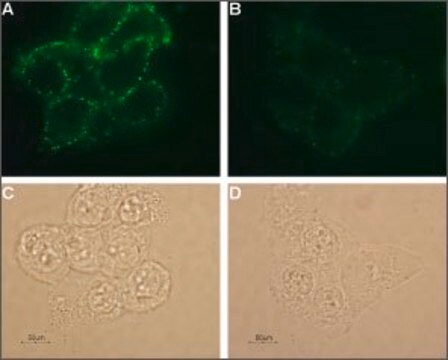687537
Poly(ethylene glycol) dimethacrylate
average MN 6,000, cross-linking reagent polymerization reactions, methacrylate, 1000 ppm 4-methoxyphenol as inhibitor
Synonyme(s) :
Polyethylene glycol, PEG dimethacrylate
About This Item
Produits recommandés
product name
Poly(ethylene glycol) dimethacrylate, average Mn 6,000, contains 1000 ppm 4-methoxyphenol as inhibitor
Forme
powder
Poids mol.
average Mn 6,000
Contient
1000 ppm 4-methoxyphenol as inhibitor
Pertinence de la réaction
reagent type: cross-linking reagent
reaction type: Polymerization Reactions
Point d'ébullition
>200 °C/2 mmHg (lit.)
Température de transition
Tm 50.2-53.7 °C
Mw/Mn
<1.2
Extrémité Ω
methacrylate
Extrémité α
methacrylate
Architecture des polymères
shape: linear
functionality: homobifunctional
Température de stockage
−20°C
Chaîne SMILES
OCCO.CC(=C)C(O)=O
InChI
1S/C10H14O4/c1-7(2)9(11)13-5-6-14-10(12)8(3)4/h1,3,5-6H2,2,4H3
Clé InChI
STVZJERGLQHEKB-UHFFFAOYSA-N
Vous recherchez des produits similaires ? Visite Guide de comparaison des produits
Catégories apparentées
Code de la classe de stockage
11 - Combustible Solids
Classe de danger pour l'eau (WGK)
WGK 1
Certificats d'analyse (COA)
Recherchez un Certificats d'analyse (COA) en saisissant le numéro de lot du produit. Les numéros de lot figurent sur l'étiquette du produit après les mots "Lot" ou "Batch".
Déjà en possession de ce produit ?
Retrouvez la documentation relative aux produits que vous avez récemment achetés dans la Bibliothèque de documents.
Les clients ont également consulté
Articles
Scaffold patterning with poly(ethylene glycol)-based hydrogels for cell presence in 2D and 3D environments on photoactive substrates.
Highlighting new synthetic modifications of PEG to improve the mechanical properties and degradation of resulting hydrogels in tissue engineering applications.
Hydrogel-based biomaterials for cell delivery and tissue regeneration applications are discussed.
In the past two decades, tissue engineering and regenerative medicine have become important interdisciplinary fields that span biology, chemistry, engineering, and medicine.
Notre équipe de scientifiques dispose d'une expérience dans tous les secteurs de la recherche, notamment en sciences de la vie, science des matériaux, synthèse chimique, chromatographie, analyse et dans de nombreux autres domaines..
Contacter notre Service technique






